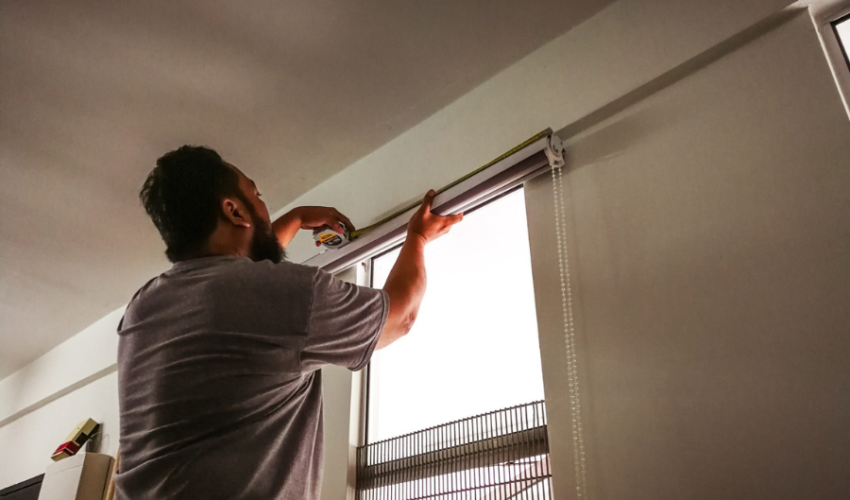Why do LED Lights Fail so Often?
HandyMan Services Dubai
LED (Light Emitting Diode) technology has revolutionized the lighting industry with its energy efficiency and long lifespan. However, despite these advantages, LED failures are more common than one might expect. In order to address this issue effectively, it is important to understand the causes behind LED failures and seek better solutions. Understanding the root causes of LED failures is important for implementing effective solutions. At HMSD Handyman Services Dubai, we recognize the importance of explaining these causes and to offer reliable solutions.
Common Causes of LED Failures
The common causes associated with LED Failures are overheating, electrical issues, manufacturing defects, and environmental factors. These all are explained below with its solutions.
1. Overheating
Overheating is a common problem in LED technology that can significantly impact performance and longevity. One of the main issues is inadequate heat management, which leads to excessive temperature buildup. When LEDs generate heat, it needs to be efficiently dissipated to avoid premature failure. Additionally, poorly designed fixtures that restrict airflow intensify the overheating problem. Inadequate ventilation in fixtures can trap heat, further increasing the risk of LEDs overheating.
The solution to address these problems is to upgrade heat sinks to enhance thermal dissipation and ensure proper ventilation in fixtures to lower overheating. By improving heat management, LEDs can operate within their optimal temperature range, leading to improved performance and extended lifespan.
2. Electrical Issues
Electrical issues pose significant risks to LED components, leading to failures and potential damage. Power surges caused by electrical fluctuations can be detrimental to LEDs, as they are sensitive to these surges. High voltage spikes can cause irreversible damage to the components. Additionally, incorrect wiring creates a risk of short circuits, further increasing the likelihood of LED failures.
To address these electrical problems, it is crucial to install surge protectors that safeguard against power surges. Implementing voltage regulation systems can also help stabilize the electricity supply, reducing the risk of electrical issues. Additionally, ensuring proper wiring practices can help prevent short circuits and subsequent LED failures, ensuring optimal performance and longevity.
3. Manufacturing Defects
Manufacturing defects are a common issue impacting LED products, leading to early failure and reduced lifespan. Quality control mistakes during the manufacturing process can result in the production of ineffective. LED products, which are more prone to early failure. In addition, the use of defective materials in LED components can weaken their overall structure, compromising their longevity.
To address these manufacturing defects, it is essential to enforce strict quality control measures throughout the production process, ensuring that all LED products meet quality standards. Furthermore, sourcing high-quality materials for LED components can help improve the overall durability and performance of the products, ultimately extending their lifespan and reducing the chances of failures due to manufacturing defects.
4. Environmental Factors
Environmental factors can significantly impact the performance and lifespan of LEDs. One problem arises from exposure to moisture, which can weaken LED circuitry and lead to malfunctions and eventual failure. To address this, it is important to seal LED units against moisture, preventing corrosion and ensuring consistent performance. Another issue stems from operating LEDs in extreme temperatures beyond their specified range, which can degrade their performance over time and eventually lead to failure.
The solution is to operate LEDs within their specified temperature range, implementing proper cooling and thermal management techniques to maintain optimal operating conditions. By addressing these environmental factors, it is possible to mitigate the risk of LED malfunctions and ensure their longevity and reliability.
Importance of Proactive Measures
Frequent LED failures pose significant cost implications for businesses, with expenses related to replacement and maintenance quickly accumulating and straining budgets, thus affecting financial performance. Addressing underlying issues such as implementing quality control procedures and using reliable components can mitigate these costs. Discarded LED products contribute to electronic waste, releasing harmful substances into the environment; proactive measures to prevent failures can reduce waste generation and minimize environmental impact. Moreover, LED failures can damage the reputation of manufacturers and suppliers, eroding customer trust and credibility; rigorous quality control processes and reputable suppliers can help safeguard reputation, retain customer confidence, and sustain competitiveness in the market.
Conclusion
In conclusion, frequent LED failures can have significant financial, environmental, and reputational implications. It is crucial to implement preventive measures, such as rigorous quality control procedures and collaboration between manufacturers and consumers for sustainable LED solutions. This will help minimize costs associated with replacement and maintenance, reduce electronic waste, preserve reputation, and provide reliable LED products that meet customer expectations. Taking proactive steps ensures financial stability, environmental responsibility, and customer satisfaction in the LED industry.
Frequently Asked Questions
What are the major causes of LED failures?
LED failures can be caused by factors such as poor quality control, overheating, electrical issues, and component degradation over time.
How can preventive measures help reduce LED failures?
Implementing preventive measures like regular maintenance, using high-quality components, and ensuring proper installation can help reduce the occurrence of LED failures.
What role do quality control procedures play in minimizing LED failures?
Quality control procedures, such as rigorous testing and inspections, are essential in identifying potential issues early on and ensuring the reliability and longevity of LED products.
HandyMan Services Readers Reviews & Comments
Please feel free to comment about our article and leave a review on our contact us page if you like our services.
Emergency Handyman in Dubai – Arrived in 30 Minutes!
I had a broken door lock at midnight, and I was locked out of my apartment. I needed a fast handyman near me, and luckily, I found this service. Their emergency handyman team in Dubai arrived in just 30 minutes, replaced my lock, and made sure everything was secure. I was impressed with their 24/7 handyman availability and professional approach. They also explained their pricing upfront, which made me feel confident in their service. I’ll definitely use them again for any urgent handyman needs!
Response from HMSD Handyman Services Dubai
Lisa, we’re so happy we could assist you during your emergency! Our urgent handyman services are designed to help Dubai residents anytime, day or night. Thanks for trusting us with your lock replacement. Call us whenever you need quick and reliable handyman support!
Same-Day Furniture Assembly – Life Saver!
I moved into my new apartment in Dubai Marina and had tons of furniture that needed assembling. I searched for a same-day handyman and found HMSD Handyman Services. They sent two handymen within a few hours, and they quickly assembled my wardrobe, bed, and shelves. Super efficient and professional! If you need handyman today for urgent tasks, don’t hesitate to book them!
Response from HMSD Handyman Services Dubai
Thank you, Lisa! We’re so happy to hear that our team could help you settle into your new home with same-day furniture assembly. We’re always here for quick and professional handyman services in Dubai!




